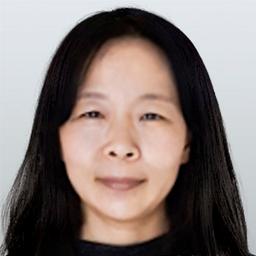In an ongoing diplomatic saga that began in 2017, the Chinese Communist Party (CCP) implemented a de facto “Korean Content Ban” as a reprisal against South Korea for installing the THAAD missile defense system. Despite easing some constraints in 2021, the CCP recently ratcheted up restrictions. As of February this year, the South Korean Ministry of Culture, Sports, and Tourism reports that Chinese authorities have indefinitely suspended all new licenses for South Korean TV dramas.
Ahn Cheol-soo, a member of South Korea’s National Assembly’s Foreign Affairs and Unification Committee and part of the ruling People Power Party (PPP), disclosed data on Oct. 6 from the aforementioned ministry. According to the data, between January and February 2022, China’s State Administration of Radio, Film, and Television (SARFT) approved licenses for 18 South Korean dramas, including popular titles such as “What’s Wrong with Secretary Kim,” “Hospital Playlist,” and “Hometown Cha-Cha-Cha.” Since then, however, further approvals have been halted.
The information further shows that even though South Korean TV networks secured copyright agreements with their Chinese counterparts at the Shanghai TV Festival in June, business as usual could not resume.
Historically, three to five South Korean films found their way into Chinese cinemas annually before the THAAD imbroglio. After a prolonged ban, “Oh! My Gran” made its Chinese debut in December 2021. Notably, after a November 2022 summit between Chinese leader Xi Jinping and South Korean President Yoon Suk Yeol, Tencent Video became the first Chinese OTT platform in six years to air a South Korean movie, “Hotel by the River.” No subsequent releases have been confirmed.
When it comes to video games, the CCP also ceased issuing version numbers—effectively import and service licenses—in April. Prior to the 2016 THAAD deployment, the Chinese market had welcomed 35 South Korean games. That number plummeted to six in 2017 and stopped altogether between 2018 and 2019. A slight resurgence occurred from 2020 to 2022, with approvals granted for one, two, and seven games, respectively.
THAAD (Terminal High Altitude Area Defense) is a U.S.-designed and manufactured anti-missile system that was installed in South Korea between 2016 and 2017 as a bulwark against a potential North Korean missile attack. However, Beijing insisted that the deployment of THAAD impacts China’s security and adopted a series of countermeasures and boycotts against South Korea.
A Chosun Ilbo report speculated that the CCP is using cultural sanctions as leverage over South Korea, as the latter fortifies its alliances with the United States and Japan.
Despite officially denying the existence of a “Korean Content Ban,” the CCP has continually curtailed South Korean cultural exports since 2017 as punitive measures for the THAAD installation.
Han Mino, a former official with South Korea’s Ministry of Culture and representative of the Confucius Institute Truth Promotion Campaign, opined that the CCP aims to use the ban to sow discord between the Yoon administration and the South Korean populace. He contends that the CCP is signaling that South Korea’s alignment with U.S. and Japanese policies has jeopardized its cultural exports to China.
Yoon’s Proximity to the US and Japan Causes Unease for Beijing
Since his inauguration, Mr. Yoon has increasingly aligned with the United States and Japan, fortifying an already robust trilateral alliance that has left the CCP distinctly uncomfortable.Earlier this year, in March, Mr. Yoon took an unprecedented step towards rebuilding relations with Japan, resuming the “shuttle diplomacy” that had been dormant for over a decade.
Then, on April 26, following a high-profile summit with U.S. President Joe Biden, Mr. Yoon issued a joint statement confirming that South Korea is in sync with the United States on its Indo-Pacific strategy. This strategy, aimed primarily at containing the CCP, received further commitment from both leaders. The statement notably highlighted “peace and stability across the Taiwan Strait as an indispensable element of security and prosperity in the international community.” It also explicitly condemned any unlawful maritime claims, the militarization of artificial islands, and unilateral attempts to alter the status quo, particularly through coercive means.
Furthermore, on Aug. 18, a historic Camp David summit involving Mr. Yoon, President Biden, and Japanese Prime Minister Fumio Kishida marked the advent of a comprehensive era of collaboration against both North Korea and the CCP.
This deepening of alliances has exacerbated the CCP’s anxieties as it watches South Korea drift further away from a neutral stance on Sino-American relations to one that increasingly echoes the positions of the United States and its allies.







